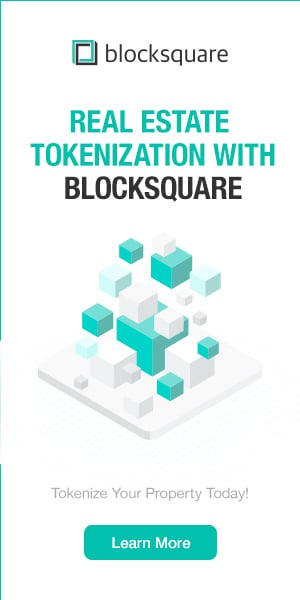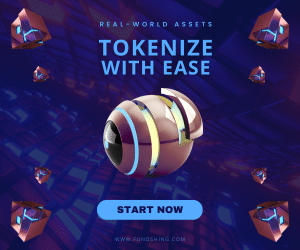Do banks fit into the equation of tokenization?

Lasse Meholm has a unique insight into how at least some of the traditional financial players think about blockchain and blockchain-based areas such as tokenization and security tokens. Just recently he left his position as Head of Blockchain & DLT Strategy in Norway’s biggest bank, DNB, to seek new challenges. In this interview, he will help us understand how the typical banks look at crypto and tokenization and which role they are likely to play in the space going forward.
Michael Juul Rugaard (MJR): What is the primary concern from traditional banks’ point of view towards blockchain and new developments such as tokenization?
Lasse Meholm (LM): I think the lack of precise regulation is the number one barrier and what is, first of all, holding the banks back. In DNB that was undoubtedly a critical point and the higher up in the hierarchy you asked, the greater was this concern and this reservation. A particular concern about crypto, in general, was the AML/KYC-question of whether you as a bank can keep track of what’s going on in your systems and the risk of being used for money laundering by criminals.
Even though the bank may make 10, 20 or 30 million Euro less by not utilizing the new technology, it is nothing compared to what they can lose if something goes wrong. So that is the bank’s cost-benefit analysis. And that is the reason why, for instance, DNB is not involved in tokenization or crypto even though the bank has been in dialogues with Santander and Ripple and with Barclays and JP Morgan. So, it is not that the bank doesn’t know what is happening; it is just that the top management has decided not to make a move now.
MJR: It is, of course, an understandable concern, and of course, you would expect a bank to be risk-averse. But still, don’t you think it should be possible for the bank to comply with any AML requirements if only their solution is set up in the right way?
LM: Yes, I think so, sure. It depends on the setup and technology. But many bankers are still very sceptical towards anything concerning crypto. And it’s nothing unusual for DNB. It’s more or less the same thing all over the banking sector.
But I think that this idea of tokenizing, for example, real estate, tokenizing project financing, tokenizing stock and bonds and so on is an excellent idea. And the economic environment becomes completely different from today.
MJR: Sure, and one interesting question – to elaborate further on what we just talked about – is what kind of role the traditional financial players like the banks could play in the crypto and tokenization space in the future if they decide to open up a bit and become less sceptical? Do you see a collaboration between the native blockchain and crypto players and the old banks as an option? I mean, you will probably find plenty of scepticism on both sides…
LM: I think the banks should play an active and collaborative role. For instance, within cybersecurity, many banks have more than twenty years of experience that they can bring into the blockchain, crypto and tokenization space. If the banks don’t take the role somebody else will try to take it, but I would prefer to see the banks do this because they are much better equipped when it comes to security than for example a typical crypto exchange. Just recently we had this situation in Norway where a bitcoin exchange holding 40,000 customer wallets had their server hacked, and that just wouldn’t happen if a bank secured those wallets.
MJR: So, what does it take to convince the banks that they should look into this and start playing an active part?
LM: I think the most important thing is that the regulators are positive, so if the regulators say yes, then the banks will follow the day after.
MJR: Is that going to happen anytime soon? In a lot of jurisdictions throughout the world, the regulators still don’t quite know how to handle crypto. How do you see the regulatory landscape?
LM: Well, first of all, the regulators in most jurisdictions are lagging, and there is a gap between the current state of technology – what the technology is capable of – and what the regulators understand. So, the regulators need adequate competences to understand the problems. In some jurisdictions like the UK have introduced regulatory sandboxes that allow, for instance, crypto companies to try out solutions in a safe environment while the regulators get to understand the technology. That’s a good thing because it encourages innovation and helps the market to evolve. And it might help a lot when it comes to crypto and tokenization.
MJR: You are from Norway, and I am from Denmark, and the Nordic countries often like to think of themselves as frontrunners within anything concerning digitisation. But when it comes to the regulatory side of blockchain, crypto and tokenization, my feeling is that we are certainly not in front. What do you think?
LM: We are behind. All the Nordic countries are behind. Norway, Denmark, Sweden and Finland are all behind, and if you look at what the European Central Bank and the European regulators work on it is much more advanced than in the Nordic countries, much more…
MJR: But why is that?
LM: I don’t know. It’s strange because the Nordic banks were clearly in front for more than twenty years when it came to the digitization of payments. But I don’t think that we are in front anymore – not compared to international players like Alipay and Venmo. It’s like we have been sleeping for the last ten years. I am not sure what the reason is, perhaps we thought that we would stay in front and didn’t need to anymore.
MJR: But for instance, the Swedish national bank – Riksbanken – has been experimenting recently with crypto. Wasn’t that a sign of openness and innovation?
LM: That’s right, Riksbanken in Sweden has a project, and they issued an RFP request for a proposal. They contacted four of five technology companies and asked them for a price, but what they are looking for is not crypto and not a blockchain-based solution.
MJR: It seems to me that the EU, with the EU Commission, is, in fact, more open-minded and innovative when it comes to this area that the Nordic governments. Do you agree?
LM: Yes. And for instance, the European Central Bank had a quite large test project two years ago that enabled a blockchain-based payment transaction to be made within 1.5 seconds between a company in Frankfurt and a company in Osaka, which is fantastic when you consider the fact that such payments easily take three days in the traditional banking system. So, the European Central Bank has done a lot to promote blockchain and DLT technology.
MJR: In your opinion, what should the traditional players in the financial industry do if they want to test the waters of crypto and tokenization? And how can they support the emerging industry of security tokens?
LM: There are several things. International payment is slow and banks have a lot of liquidity stored in correspondent bank to reduce counterparty risk, by using blockchain, you can eliminate the counterparty risk and keep the liquidity. And when it comes to syndication loans, for example, there is a lot of paperwork involved. To syndicate one million Danish kronor takes weeks and a lot of paper back and forth between many investors, but by doing it through a blockchain, it’s possible to save a lot of time and costs. There are a lot of opportunities, but the banks and the banking market need to understand how the technology works and then they will figure out how to benefit from the use of it.
MJR: So, if you should give two or three advice for the banks, what would they be?
LM: First, understand the technology. Second, invest some money and time in a few projects and have a quite short timeline for getting something in production – no longer than six months. You need top management buy-in, that is very important, and it’s much easier to get the management buy-in if the timeline is short.
MJR: Again, in terms of tokenization and banks, what would be the most obvious area for the banks to focus on? I mean, they are probably not interested in tokenization of artworks, but I guess tokenizing securities would resonate in the ears of a banker?
LM: Yes, absolutely, and I think that is an excellent example of low hanging fruit. I would also think tokenization of project finance and supply chain finance would be something banks could be involved in. On top when you tokenize finance like this someone needs to establish a marketplace to buy and sell tokens, this involves trust, that’s something banks could make money from.
MJR: What are the most important benefits that the banks could gain from this?
LM: Convenience for customers, that’s number one. Tokenization should make processes faster, easier, more convenient – and cheaper. And for a bank, the primary focus here is not the bank itself, but the customers of the bank.
MJR: In this young and emerging industry of tokenization, you sometimes feel a kind of impatience amongst the players of the industry, who want the industry to develop faster. This kind of impatience is probably very classical, but do you see something that is holding the industry back. Some barriers that could and should be demolished?
LM: I think that trust is a keyword here. For the industry to become successful, you need to create trust – just like the big traditional exchanges are trusted, and their clients trust the banks.
MJR: That is a very good point. So, once the regulators understand the industry and the regulation falls into place, then the banks and other traditional financial institutions will get interested. And once these already trusted parties enter the space, it will help build the trust needed to ignite the expansion of the industry further?
LM: Yes, that’s right…
Lasse Meholm does now consultancy from his company Finansit as www.finansit.no
More Article:
You Might also Like
























